Prevalia
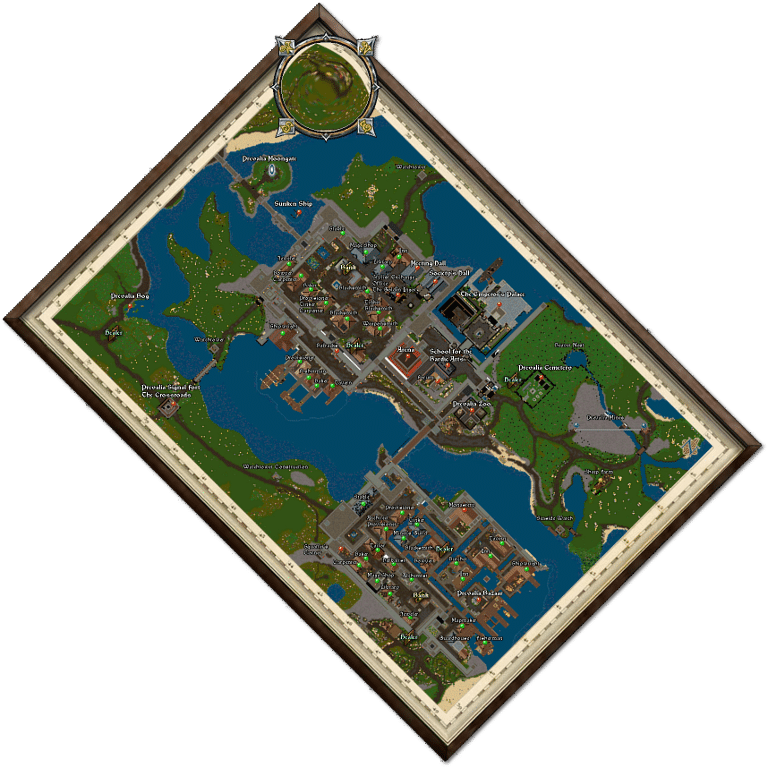
The History of Prevalia
Credit goes to Lenz for the original lore and also to Erik Gray for the amazing posts and images.
A Tale of Two Towns
Although not the oldest city in the Realm of Avadon, Prevalia certainly has one of the longest and most storied histories of all the Kingdoms. In the early days post-cataclysm (presumably around 100 AC), two relatively minor town settlements formed in the region that we now know as Prevalia. One settlement sat upon high white cliffs, the other sat below amongst the canals and marshes of the lowlands. Seeking to mutually benefit from one another’s strategic positions (the defense of the high white cliffs, the freedom of sailing and trade from the canals), the two settlements joined together through the construction of expertly-engineered bridges in 155 AC, the likes not seen before in Avadon. The two joined settlements became one city known as Prevalia.
The First Prevalian King
The first King of Prevalia hailed from one of the strongest noble families in the city, the Fletchers. The records are not clear as to how the noble families ultimately decided which family would put forth the ruling monarch, but from all accounts it was a bloodless, fairly benign event. Most likely, the Fletchers were the wealthiest noble family at the time. This first King, crowned Callum I of Prevalia, oversaw a great number of works and city improvements that Prevalians enjoy even to this day, in some form or another.
Upper Prevalia, the half of the city upon the white cliffs, quickly became the center for nobility, scholars, artists, craftsmen, and bards in the known Realm. Lower Prevalia, the half of the city amongst the canals and marshes, was more infamous with its seedy element of thieves and brigands utilizing the ports to smuggle exotic wares. Prevalia also became known for its robust trade, and a great Bazaar was established near the docks. The famous Arcane Alley was also built in Lower Prevalia, and even today it remains a great source of magical knowledge, tools, and ingredients.
The Second Prevalian King
King Callum I ruled between 155 AC until 184 AC when he and four of his sons were killed. The records do not state precisely how they died. Some records indicate they died in an ambush by Orcs in the region now known as the Urukton Bluffs. There is a record that states the King and his sons drowned when their ship struck a rock (some presume the ship wreckage in the bay of Prevalia is that ship, though it does not appear to be old enough in my estimation). Whatever the cause, the rule of Prevalia passed along to his wife Serphan, who served as governing Regent for a short time until her twin sons, Arryn and Aidyn, came of age.
It is of note that most noble families in the Prevalia region rarely produced female children. The cause of this is not truly known. Rumors of a curse abound; whispers of angry gods. A great deal of superstition fueled speculation as to why so few female children came to the noble families. One such family, the Rookwoods, suffered no such curse or godly anger, and were blessed with many daughters.
This is of note because it became a very common practice for noble families to marry their sons to the Rookwood daughters, which ultimately led to unvirtuous couplings and generations of familial stagnation.
In 210 AC, after King Arryn claimed the throne from his Mother Regent, a great military campaign was formed with the intent of driving the tribal creatures from the Outlands. Many of these sorties were led by King Arryn himself along with his two sons, Aron (known as the Stone of the Forge) and Allidon (known as the Lame, for he was born missing half a leg). In spite of his military successes abroad, vicious rumors circulated around court of a most unvirtuous relationship between King Arryn and his sister Judith. Court gossip claimed that two of Judith’s children did not belong to her husband, but to her brother the King. Whether there is any truth to these speculations is not clear.
The Third Prevalian King and the War of the Three Kingdoms
King Arryn passed away in 242 AC, ulcers of the stomach being the recorded cause. His eldest son Aron assumes the throne of Prevalia and marries a noble lady from the Ironsmythe family. Like his father, King Arryn wanted to push his military campaigns. King Arryn not only wanted to ensure the safety of Prevalia, but he wanted to expand its power as well.
After almost a decade of military campaigning, the Prevalian armies reached both the Andarian and Cambrian regions within the same year of 251 AC. The desire for territorial expansion and the lack of want for equal powers, King Arryn pushed his armies into military conflict with both Andaria and Cambria. Most of these battles were easily won by Prevalia. The southern Cambrians enjoyed fighting, but never fought in an organized fashion prior to the first Condottiere hired in their defense. The Andarians simply did not have any experienced fighters. The Prevalian army, by contrast, was composed of veteran soldiers that fought against numerous tribes of creatures throughout the Outlands for the past ten years.
Sometime between 267 AC and 275 AC, depending on what records you examine, Cambria surrenders to King Arryn. It is said that King Arryn was surprised and most impressed by the Condottiere that fought on behalf of Cambria, for without them Cambria would have fallen much sooner. The Cambrian King pledged fealty to King Arryn, and in return King Arryn allowed the former King of Cambria to remain a governing Lord.
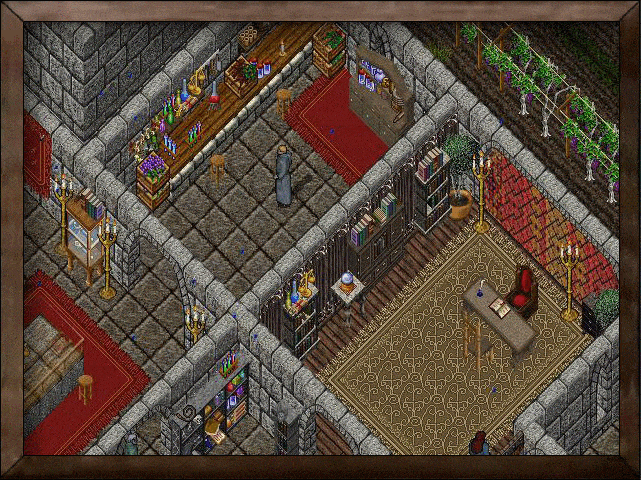
The Andarians, in spite of their green recruits early in the conflict, became staunch defenders of their homeland. Where they lacked in experience and training, they made up in passion and conviction. Much to the surprise of the Prevalian generals, Andaria held their southern border for over a decade against Prevalian assaults. However, the Andarians knew this was an untenable situation. They were ultimately losing more soldiers than inflicting casualties, and their resources were waning. It was decided that the Andarians would go on the offensive in an attempt to push the Prevalians away from their borders, bringing to mind the adage ‘the best defense is a good offense.’
Sometime between 275 AC and 287 AC, King Ardis, son of King Arryn, succeeded his father to the throne. He continued his campaign against Andaria, bolstered by strategic resources taken from their Cambrian vassal.
The Rise of the First Emperor
In the year 287 AC, the Andarian army marched through the lowlands of Prevalia, seeking to attack Lower Prevalia, as it was more strategically open to assault than Upper Prevalia which was situated high upon the cliffs. King Ardis did not wish to suffer a prolonged siege, and saw an opportunity to end the conflict. The Prevalian army moved to intercept them, and the two armies clashed in the town of Ardun, south-west of Lower Prevalia. The battle left Ardun completely destroyed, and the Andarian forces decimated. After the pivotal battle of Ardun, Andaria capitulates to Prevalian rule.
With both Cambria and Andaria as vassal states, King Ardis crowned himself the new Emperor of the Avadonian Empire, which now spanned all along the eastern coast north to south, and a good deal of the central mainland.
It was also around this time that Emperor Ardis married a noble lady by the name of Collette from house Calderson. She was suspected of using glamor magic, for it is reported that everyone who looked upon her saw the greatest beauty ever beheld, and each person recounted her appearance differently. Rumors circulated by chambermaids and perhaps jealous ladies of the court state that without the use of the glamor, Collette was extremely homely, even beast-like. But, how much stock can truly be put into the rumors of Court? Emperor Ardis was quite happy with his new wife, and together they had no less than a dozen living children. Only one of these children, though, was a son and heir, named Laric who was born in 293 AC. This proliferation of girls is said to have broken the ‘curse’ of Prevalian nobility unable to produce female offspring. Some attribute this to Ardis’ ascension to Emperor, others to the defeat of Cambria and Andaria. The more educated assessed it was because noble offspring were being married outside of a single family more often than previous generations. However, these educated scholars held their tongues when Laric the heir was married to Rosetta, a daughter of Cambria and a distant cousin in 309 AC.
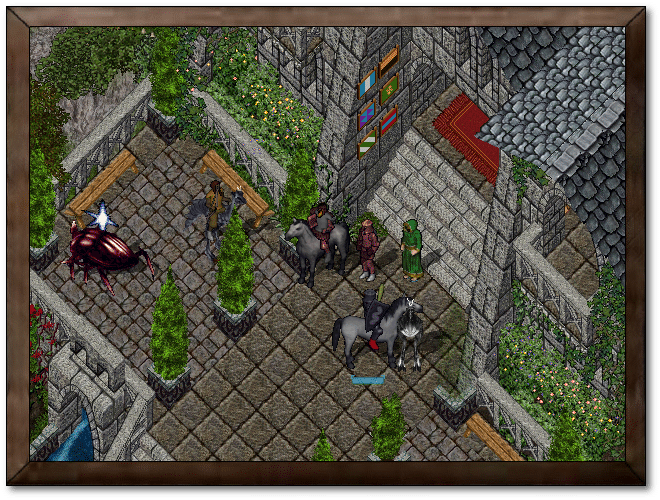
A side note: after conquering Cambria and Andaria, Prevalia's gravity for scholars, wizards, poets, bards, and so forth increased which furthered Prevalia's reputation as the foremost authority on all intellectual matters until the establishment of the Great Lycaeum in 323 AC.
Emperor Laric the Industrious and the Prevalian Golden Age
In 311 AC, Emperor Laric ascends the throne of Prevalia. In a tribute to his now deceased father, he commissions a great work that would be named The Walkway of the Emperor. This walkway was set into the western cliffs of Prevalia and served as tombs fit for the former Kings and Emperors of Prevalia. Each tomb was set upon a path, giving the area a canyon-like feel. The doors to the tombs were set with warnings, and also with precious gem stones that reflected the sun during the winter months to create cascades of rainbows all up and down the walkway. It is even said that when the wind blew through the tombs, the voices of the dead Kings could be heard.
In addition to the Walkway of the Emperor, Emperor Laric procured a great deal of stone from a nearby quarry north-west of the city. These expertly-cut stones were used to create strong walls and bolster the defensive measurements of Prevalia. These works, in addition to the construction of numerous new structures throughout the city, earned Emperor Laric the moniker “The Industrious.”
With much of Prevalia now safely behind thick stone walls, and the spirits of his ancestors appropriately honored, Emperor Laric turned his attention outward. With a powerful military of combined Prevalian, Cambrian, and Andarian soldiers, war is waged across the greater part of Avadon against the many tribes of Orcs, Ratmen, Lizardmen, and other nefarious creatures. The noble Moores and Rookwoods of Prevalia were tasked with defeating the forces of Garnuk the Ogre, a task with which they were quite successful.
With the successful military campaigns across the Avadonian mainland and trade freely flowing through ports and across all roads through all three Kingdoms, 315 AC marks the beginning of the Prevalian Golden Age.
After seven years of relative peace throughout most of the land, Emperor Laric decided to strengthen the political bonds between Prevalia and its two vassals by marrying his sons to the daughters of Cambrian and Andarian noble families in 327 AC. This decision by Emperor Laric was well-received in both Cambria and Andaria.
Emperor Laric “The Industrious” set his eye towards expanding Prevalia’s military prowess in the year 348 AC. With a lack of native lumber sources to build a true Prevalian fleet, he turned his eye westward to where a small gypsy lumber camp had been established. This gypsy lumber camp was transformed and expanded upon greatly, turning into a tried and true town in its own right, now known to us as Terran. Between 348 AC and 370 AC, the efforts of lumbering took a toll on the Terran Plateau, which now lies barren of trees.
During this same time period, up until around 370 AC, Emperor Laric set about establishing numerous military strongholds across the Avadonian Empire. These stone structures stood as bulwarks against any tribal menaces that encroached upon the borders of mankind. It was also during this time that the Societies building was constructed in Prevalia, a center for craftsmen and adventurers alike to find employment and tasks.
It was to the great happiness of Emperor Laric that he lived long enough (to the grand old age of 95) to bear witness to the defeat of the Orcs upon the Avadonian mainland. A rigorously genocidal campaign against the Orcs was carried out in 383 AC by Marshal Emil. This campaign culminated in a final victorious battle against the Orcs at Carse Lake.
When Emperor Laric passed from old age, a great mourning fell upon the city. His son and successor, Laric II took up the throne in 384 AC and ruled until 441 AC. Laric II did not have his father’s grand vision, nor aptitude with building or even with military campaigns. Very little of significance happened during Laric II’s reign.
The Reign of the Mad Emperors
The period of time spanning from 441 AC to 490 AC is a different matter entirely. This era became known as the ‘Reign of the Mad Emperors’, and a great deal of what had been built and accomplished by Emperor Laric I fell by the wayside, or was undone entirely. Most critics agree that generations of unvirtuous familial couplings led to the horrible curse that befell these three Emperors, and that they were a punishment for the entire land who allowed it to happen.
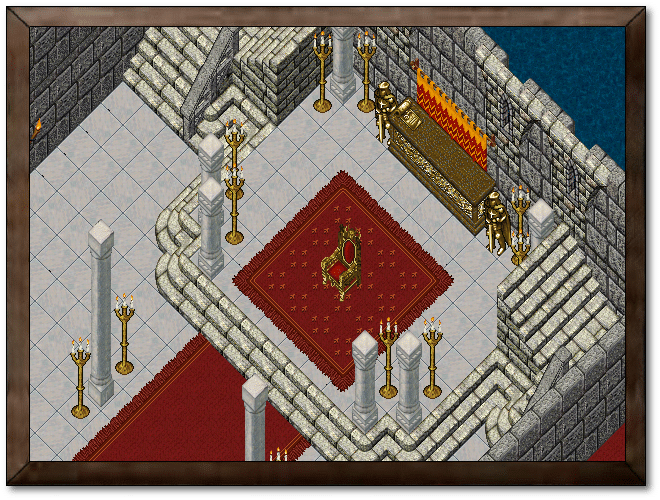
In 441 AC, Emperor Canack ascended the throne, replacing his otherwise insignificant father. His rule only lasted a mere eight years, but it was marked heavily by mistrust. Emperor Canack was said to be incapable of trusting anyone. He took no advisors, and refused to treat with Andarian and Cambrian diplomats. His paranoia and mistrust grew so powerful and wild that he began to have prominent nobility kidnapped, tortured, and killed if he even remotely suspected them of treason. Of course, there was never any evidence that any of these people were plotting treason, but Emperor Canack did not seem to listen to reason. His mistrust expanded to the point where he had two of his young sons, along with three of his wives tortured and executed over those eight years. His fourth wife was slated for the same fate, but before he could give the official order to have her tortured and executed, Emperor Canack suffered a fall from the battlements of the castle in 449 AC. The exact cause of this fall is never recorded.
In 449 AC, Emperor Reilquios ascends the throne. After eight terrible years under Emperor Canack, there was a spring of hope among the nobility of Prevalia as well as among the Cambrians and Andarians. Their hope would be greatly misplaced, though. Emperor Reilquios came into the throne at a very young age, being merely 12 years old. His first act as Emperor was to have his mother imprisoned, whom he suspected for his father’s death, and sent off to the Cloisters of the Sisters of Honor. Over the course of his 23-year reign, Emperor Reilquios became known primarily for two things: hosting extremely lavish parties, and executing those who refused to attend his parties. The Emperor obtained great satisfaction and mirth at these parties because he would often poison half of the food and drink and watch as half of his guests died in terrible ways. It is not without a helping of irony that Emperor Reilquios’s reign ended in 472 AC when he accidentally drank from a poisoned cup meant for his wife. He left behind two sons, the eldest being Leopold and his youngest being Linus. If there is one positive legacy left upon Prevalia by Emperor Reilquios it is that his exuberant spending did greatly enrich the Emperor's Palace.
Leopold and Linus naturally attended the mourning of their father. This would be the same day that Leopold would have also ascended the throne. However, the crowning ceremony was to take place later in the day, after the mourning of Emperor Reilquios. Although nobody knows for certain, the common story told was that Linus and his brother Leopold went for a stroll along the Walkway of the Emperor during the mourning. It was at this time that Linus thrust a sword through his brother’s back. The stories tend to go on and mention that Leopold’s blood splattered across the precious gems set into the tombs of the dead kings. One such gem was said to actually be an ancient shard from the Gem of Immortality, and the blood of Linus’ dead brother freed a Shadowlord from it.
Whether or not this is true, it is highly peculiar that when Linus ascended the throne that evening in 472 AC instead of his brother, there was a mysterious advisor at his side that nobody in court knew. Linus seemed to only take this mystery advisor into his confidence and did not listen to the advice of any of the court advisors, diplomats, or generals. It is said that this advisor informed Linus that his death would come at the hands of his son. This dubious prophecy would set the tone for Emperor Linus’ reign.
Emperor Linus married the “Lady of the Ice”, Delia of house Hosenfield. Together, they had a number of children. All of these children were males. At the advice of his sole advisor, Emperor Linus would have the newborns thrown from the cliffs of Prevalia. After multiple of such incidents, Delia, once more pregnant and bereft with grief, devised a plot with one of her ladies in waiting. If Delia were to give birth to a son, she would switch the child with the lady in waiting’s daughter. Naturally, Delia gave birth to a son. Enacting her plan, she swapped the child with the lady in waiting’s daughter. Delia’s son was sent to one of Delia’s sisters in Andaria to be raised. This child would never learn of his true identity.
When presented with a daughter, Emperor Linus was overjoyed. In honor of his wife and newborn daughter, he had a mighty Keep built in the valley northwest of Prevalia. It was named Delia Keep, after his wife. Around this same time, under the direction of his shadowy advisor, Linus ordered the creation of another Keep just south of Prevalia among the cliffs. Why this location was chosen was known only to Linus and his advisor. Many craftsmen were reluctant to build this keep due to the difficult terrain, but under the promise of ‘eternal life’ from the mysterious advisor, the Keep was built. The Keep was ultimately named after Linus’ daughter, Vell.
In 490 AC, somehow Linus learned of the deception carried out by Delia and her lady in waiting. Some say the advisor told him of the betrayal, some say Delia herself told him. Nobody knows for sure. But what happened next marks the end of the Reign of the Mad Emperors. In a fit of the most extreme rage, Linus threw both Delia and Vell off of the cliffs of Prevalia, dashing their bodies on the rocks below. He ordered the execution of everyone within Delia Keep and Vell Keep. Delia Keep was henceforth known as “Contempt” and was left abandoned for a very long time. Vell Keep was dubbed “Forsaken Keep”. Upon exacting his rage, Emperor Linus threw himself from the cliffs of Prevalia, joining his wife, false daughter, and all but one of his sons.
The Reign of the Mad Emperors took a heavy political toll on the Realm at large. Both Andaria and Cambria were neglected politically, and exploited of raw materials and resources. When Emperor Linus died with no clear heir to the throne, a number of claims came, including some from Andaria and Cambria. These simultaneous claims for the vacant throne of the Avadonian Empire was the final crack that would shatter the Empire.
Cambria and Andaria Secede, the Empire Splinters
Both Cambria and Andaria formally seceded as Prevalian vassals in 491 AC. Without a central governing force in Prevalia, the richest noble families took it upon themselves to push their personal interests as well as what they believed were the interests of the Prevalian people. Distant relatives of Linus began civil wars for the throne. For many years, civil war grips the center of Prevalia and pervades all aspects of Prevalian life.
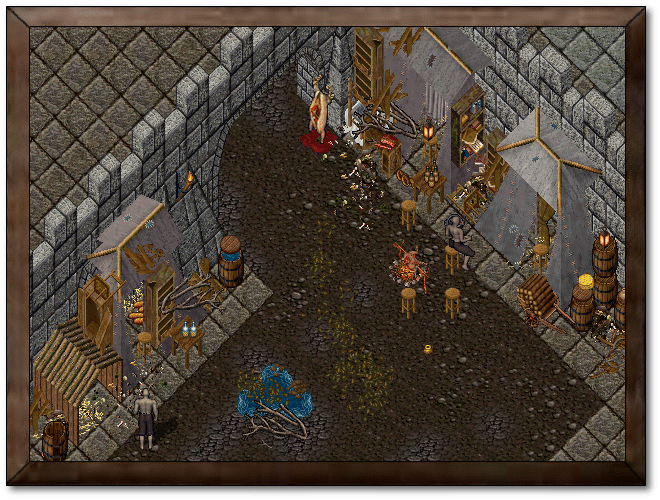
As a side note in this tumultuous history, a boy is born in Lower Prevalia to a commoner. This boy was named Landau, who would go on to become one of the most powerful and influential mercenary commanders (and lords of the land) in more modern history. But, around this time period, he was expelled from Prevalia after he killed the son of a powerful member of House Solemn, who were among the richest family in Prevalia at the time.
The Siege of Prevalia and the New King
Around 558 AC, a large Cambrian host marched upon Prevalia, led by Lord Falthar of Cambria, who was the grandson of the Cambrian King who seceded from the Avadonian Empire. With him was Captain Landau, the most famous mercenary captain and leader of the Dark Banner Company. The imminent peril of Prevalia perhaps spurred the impetus for a new King to emerge. King Calym III, one of the distant cousins who had been fighting over claim to the throne, was ultimately crowned King in time for the defense of the city.
After so many years of infighting and civil war, Prevalia’s standing army simply was not strong enough to stand against the Cambrians and the Dark Banner Company. Not in an open field, at any rate, and they couldn’t protect the entirety of the city. King Calym III made the decision to use the small Prevalian army and the Prevalian navy to defend Upper Prevalia, as it was a far more defensible position. Lord Falthar of Cambria did not fail to seize upon the opportunity to sack Lower Prevalia and slaughter the population. Lower Prevalia, to this day, reflects the scars of this brutality in its poverty.
In an effort to prevent further death and destruction within Prevalia, King Calym III offered a challenge to Lord Falthar. The two would each send their best champions for single combat. Lord Falthar, knowing he had perhaps the greatest swordsman ever known at his side, agreed, as no doubt the defeat of the Prevalian champion would land a severe blow to morale. King Calym III chose a proficient warrior by the name of Owaen, who had never lost a duel in his life. Lord Falthar chose Captain Landau.
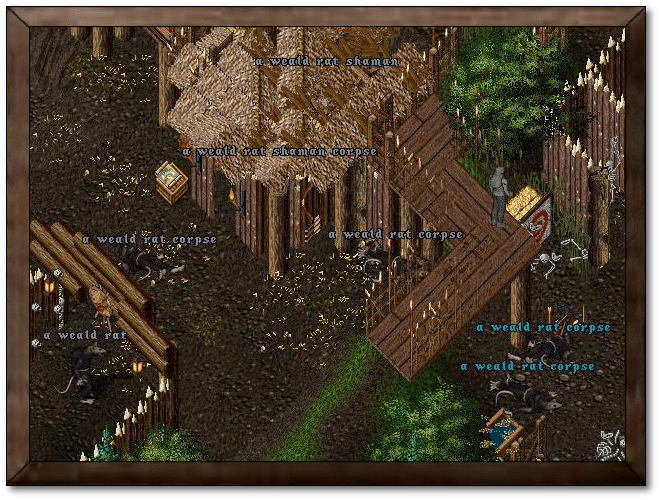
As much as the poets and bards attempt to glorify this fight between champions, the reality was quite more mundane and simple. Captain Landau won very easily and quickly, much to the dismay of the on-looking Prevalians.
With only the Prevalian navy as the last true defense of Upper Prevalia, it seemed only like a matter of time until all of Prevalia fell to Cambria’s might. This is why it was so unexpected that the siege was lifted suddenly in 560 AC. Captain Landau, for reasons that can only be speculated at, killed Lord Falthar and his guards and left with his Dark Banner Company. With no leadership at the head of the Cambrian forces, and the best fighters having left, the remaining Prevalians rallied and routed what was left of the Cambrian army. Prevalia was saved by the betrayal of one man, the very one that had been expelled from the city years previous, Captain Landau.
The Weakened Prevalia
Over the following 10 years, King Calym III focused his efforts on rebuilding Lower Prevalia and attempting to put together a new Prevalian army. With most of the veteran soldiers killed during the civil wars and the siege of Prevalia, the bulk of the new army were green recruits. This made it especially difficult to resist the Andarian military’s rise to power between 570 AC and 585 AC. Queen Klara of Andaria married the now Lord Landau and their combined armies were nigh unstoppable, as both Prevalia and Cambria tried and failed to defeat them.
In 577 AC, a future king of Prevalia is born, Laric IV. He is brother to King Calym III, and nephew to another future King, Alyan.
On through 604 AC, Prevalia attempted to fight back against Andarian incursions. The son of Queen Klara of Andaria and Lord Landau, Luka the Cruel, replaced his father at the head of the Dark Banner Company, often striking and raiding deep into Prevalian lands. Due to these frequent and brutal raids, Prevalia simply did not have the army to fortify many of the strategic settlements that had been built under Emperor Laric “The Industrious’” rule. A powerful and prolific group of Weald Ratmen established Fort Chikek in the valley northwest of Prevalia, cutting the former Prevalia-Andaria roadway.
The Peace That Never Was
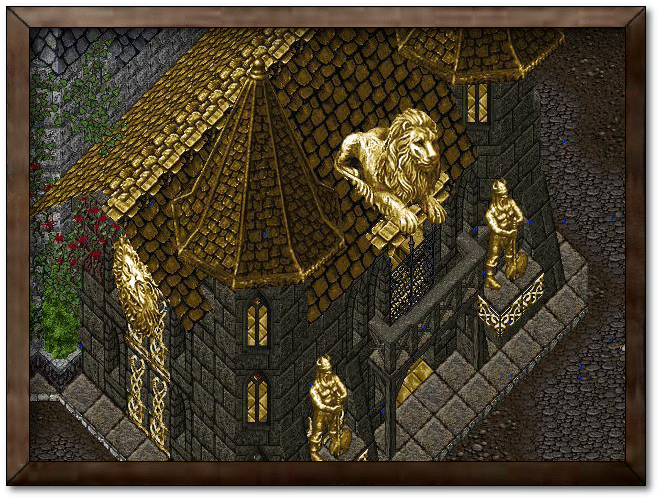
In the year 609 AC, it became quite clear to King Calym III that the constant warfare was simply untenable and sued for peace between the three Kingdoms. As luck would have it, both Andaria and Cambria likewise felt the negative effects of the prolonged wars and agreed to a meeting. King Calym III and his uncle, Alyan, attended a meeting of the three Kingdoms in the Ancient Glade. King Calym III sent his uncle and attendants away, as did the Cambrian King and Andarian diplomat. What happened afterwards remains a mystery. By all accounts, when Alyan and the rest of the attendants returned, King Calym III and everyone else at the meeting were simply gone, and instead there was a black moongate. Fearing deception and an ambush, Alyan, now the rightful King of Andaria, ordered his men to leave the Ancient Glade and make their way back to Prevalia. En-route to Prevalia, a large group of Weald Ratmen from Fortress Chikek set upon King Alyan’s retinue. Everyone, including King Alyan, were slain. King Alyan’s reign lasted but a day.
Once word reached Prevalia of the fateful news, the young Laric IV was crowned King of Prevalia. Inexperienced and green, King Laric IV was unsure about how to proceed with the events that recently unfolded. Prevalian forces were ordered to withdraw from their furthest outposts to protect the immediate Prevalian borders.
In the wake of Prevalian soldiers being moved, an opportunistic clan of Trolls attacked and sacked Fortress Vell (the Forsaken Keep), slaughtering the few soldiers that remained garrisoned there. The more superstitious among us claim that the souls of the dead still linger within the Forsaken Keep, as was the nature of the promise of Linus’ mysterious advisor.
After the fall of the Forsaken Keep, Carlyn the former Captain of the Prevalian Guard established a venture named the Iron Assault. This venture continues on this day, hiring adventurers and soldiers alike in campaigns to turn back the hordes of creatures that now plague not just Prevalian lands, but all of Avadon. Laric IV tasked himself with keeping the local populace of Prevalia happy. To that end he commissioned the construction of the Golden Ingot Casino in an effort to provide distraction and entertainment.